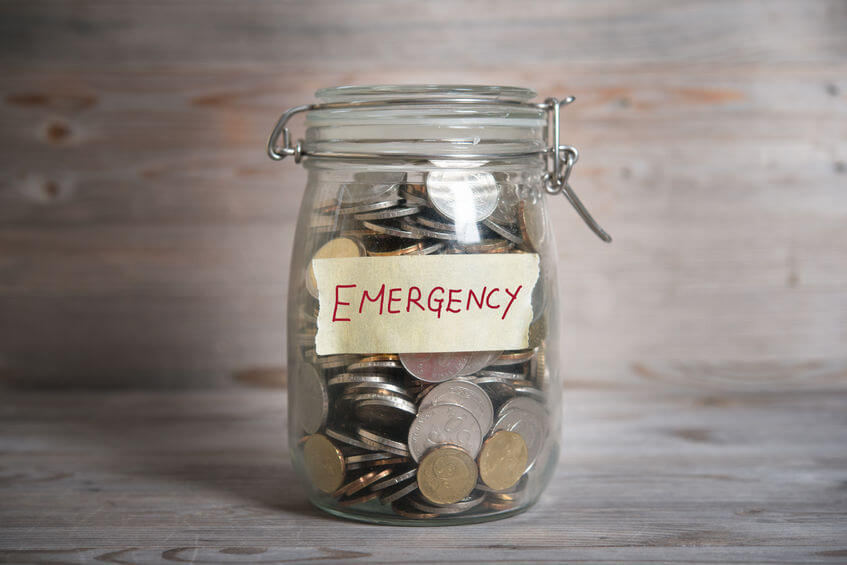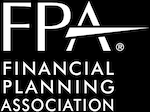An emergency fund is an essential component to the successful management of your finances. Financial professionals have varying opinions on how much you should keep in such an account. But almost all of us agree it’s necessary to establish one sooner than later—even before paying off certain debts.
It may seem like an automatic decision to keep your emergency fund in a regular savings or checking account at a bank so it’s easily accessible. But with little to no return in such accounts, is it actually the right choice? I would argue that low interest rates environments are reason to rethink this age-old strategy.
Keeping an emergency fund—typically a few months of your salary—in a regular bank account does have its advantages.
As previously mentioned, they have liquidity and are easily accessible, plus you can rest assured your money is safe due to the bank’s deposit insurance.
But in addition to receiving no “real return”, some banks around the world have started charging negative interest rates on checking and savings accounts. This is obviously not a good thing.
So what’s a better alternative? Is there an option that doesn’t force you to sacrifice returns for safety and liquidity?
Luckily, there is. A Roth IRA is a savings vehicle that allows you to both save for retirement, while also providing emergency funds if needed. Following are some of the more specific advantages to allowing a Roth IRA to serve this dual purpose.
-
Wide range of investment options
Once you invest in a Roth IRA, your money can be invested in several different options, including individual stocks, bonds, bond funds, money markets, or mutual funds. Depending on your retirement goals, a mix of several different funds may be the right choice in order to provide balance to your portfolio. Seek advice from a financial professional about what is appropriate for your situation
-
Option for low-risk investments
It’s generally not a good idea to put all your emergency funds in risky investments. With a Roth IRA, you can choose the level of risk for the various funds in your portfolio. Again, a financial expert can offer advice based on your particular situation.
-
Relatively quick access
A Roth IRA may not provide the instant liquidity of a savings or checking account, but it can still give you access to funds you need within a few days. Even if an emergency arises, you usually have a decent window of time to take care of the payment. If you have to use a credit card, at least you’ll be able to access your Roth funds before that payment is due.
-
Ability to withdraw contributions first
The tax rules allow you to withdraw your contributions to a Roth IRA first, before depleting your investment gains. That means you get tax-free access to contributions at any time.
Note: In order to get access to investment growth prior to age 59 ½, you will have to pay both income taxes, plus a 10% penalty tax on earnings that are distributed.
-
Not subject to required minimum distribution rules
Another reason why Roth IRAs can be effective emergency funds in retirement is because they are not subject to the required minimum distribution rules that apply to IRAs and 401(k)s beginning at age 70½.
This means you can use this money in retirement when you wish. It’s no longer when federal law requires you to withdraw it.
-
Short-term access to money without tax consequence
A Roth IRA allows you to take money out once a year, and then put the same amount back within 60 days without any negative tax consequences. This rule is ideal for accessing emergency funds that you’ll be able to pay back quickly.
Note: if the money is not paid back within the 60-day repayment deadline it will be considered a distribution and the money won’t be able to go back into the account.
One other savings option: MyRA
The myRA can be a good opportunity for someone looking to set aside $5,000 or $10,000 for an emergency fund.
The Federal Government uses this retirement savings vehicle to help people that don’t have a 401(k) or other employer-sponsored retirement plan. The myRA operates like a Roth IRA. But the sole investment option within it is a safe and secure United States Treasury savings bond. The bond will pay higher returns than you would receive in a savings or checking account.
The principal is not guaranteed. But since the fund invests in short-term notes there is little risk of a loss in value.
The myRA savings bond is also usually ahead of the effect of inflation. This means you can grow your investments in real dollars.
It allows you to maintain liquidity like a checking or savings account. But you can also increase returns and get preferential tax treatment, while keeping investment risks down.
The Bottom Line:
We’re living in a low interest rate environment. So finding the best savings vehicles and investment options can be challenging when trying to build, maintain and protect an emergency fund.
Hopefully you now understand how options like Roth IRAs and myRAs can be valuable. They pay higher returns than a regular bank account and offer other benefits.
Before deciding which route you’ll take, take some time to review your spending habits. Then you can decide how large of an emergency fund you many need.







